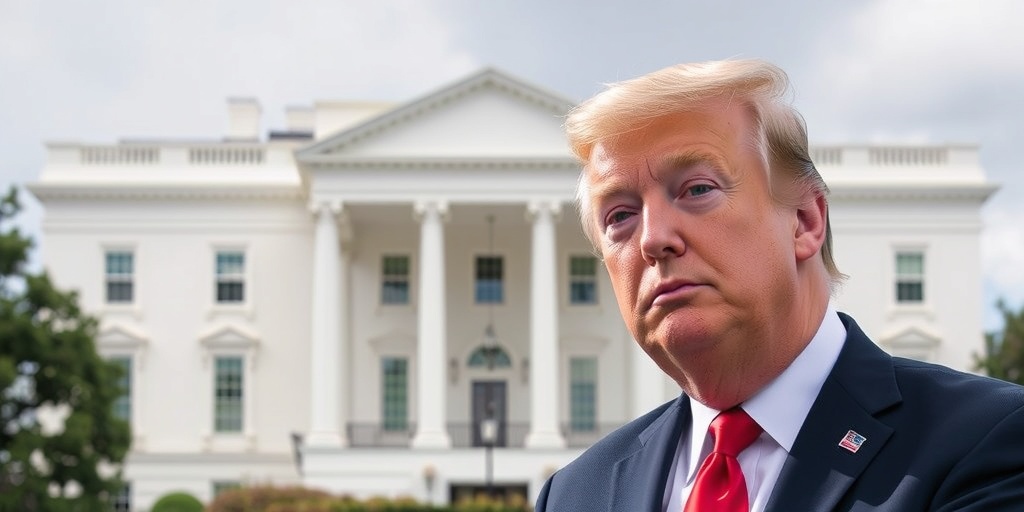Now Reading: Gold Hits All-Time High Over Tariff Concerns
-
01
Gold Hits All-Time High Over Tariff Concerns
Gold Hits All-Time High Over Tariff Concerns

Gold Prices Surge to Record High Amid Economic Uncertainty
In a remarkable turn of events, the price of gold reached an unprecedented high on Friday, surpassing $3,000 per troy ounce for the very first time. This surge comes as investors navigate the complex landscape of President Trump’s fluctuating tariff policies, growing concerns about an impending economic slowdown, and a declining stock market.
Historically, investors turn to gold as a safe haven during periods of financial turbulence. This year, the demand for gold has intensified, resulting in a notable price increase of approximately 14%. Meanwhile, the S&P 500 index recently fell into a correction phase, dropping over 10% in the past month alone. These developments have left investors anxious about the potential ramifications of Trump’s economic strategies, particularly his inclination towards protectionist measures that are reshaping trade dynamics globally.
As the trade war between the U.S. and several economic heavyweights looms large, market analysts have revised their forecasts, indicating that gold’s rally may have more room to expand. The tit-for-tat tariff approach adopted by the U.S., China, the European Union, and Canada has contributed to a bleak economic outlook. On Thursday, President Trump escalated tensions further by threatening to impose punitive tariffs on European wine, a move that has sparked unease among producers and distributors on both sides of the Atlantic.
According to Helima Croft, the head of global commodity strategy at RBC Capital Markets, the rise in gold prices can largely be attributed to increasing uncertainty surrounding tariff implications. She noted in a recent research note, “While general uncertainty and deteriorating economic vibes are improving interest in gold, most of gold’s price action is around the uncertainty related to tariffs.” This statement reflects the overarching sentiment in the market, where investors grapple with unpredictable shifts in trade policies.
Additionally, concerns are mounting that tariffs could be directly applied to gold imports, a possibility that might lead to substantial stockpiling within the United States. This apprehension is supported by recent trade statistics, which indicate a significant influx of gold from vaults in London and refineries in Switzerland to U.S. storage facilities. Such patterns suggest a strategic move by investors to safeguard against potential tariffs that could impact the gold market directly.
Moreover, central banks around the world have emerged as significant buyers of gold in recent years, a trend that is expected to continue in the face of economic uncertainty. The diversification of reserves with gold is viewed as a prudent strategy to reduce reliance on the U.S. dollar, U.S. Treasuries, and other foreign-currency assets, particularly in the context of rising geopolitical tensions.
The growing interest in gold among institutional investors underscores its status as a reliable store of value, immune to the risks associated with traditional financial markets. As geopolitical instability escalates and economic indicators fluctuate, gold remains an attractive asset for those seeking stability and security in their investment portfolios.
In conclusion, the record-high price of gold is a reflection of not only the immediate economic conditions influenced by trade disputes but also a broader shift in investor sentiment towards safeguarding wealth in uncertain times. As the trade war continues to evolve and economic signals become more ambiguous, gold is likely to maintain its position as a critical asset in the global financial landscape. The interplay between tariffs, economic policy, and market confidence will be pivotal in shaping the future trajectory of gold prices, making it an area keenly observed by investors and analysts alike.
Stay Informed With the Latest & Most Important News
Previous Post
Next Post
-
 01New technology breakthrough has everyone talking right now
01New technology breakthrough has everyone talking right now -
 02Unbelievable life hack everyone needs to try today
02Unbelievable life hack everyone needs to try today -
 03Fascinating discovery found buried deep beneath the ocean
03Fascinating discovery found buried deep beneath the ocean -
 04Man invents genius device that solves everyday problems
04Man invents genius device that solves everyday problems -
 05Shocking discovery that changes what we know forever
05Shocking discovery that changes what we know forever -
 06Internet goes wild over celebrity’s unexpected fashion choice
06Internet goes wild over celebrity’s unexpected fashion choice -
 07Rare animal sighting stuns scientists and wildlife lovers
07Rare animal sighting stuns scientists and wildlife lovers





















